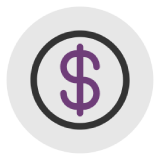Employee Savings Plans
Whether you’re an entrepreneur or an employee, saving for retirement, home ownership or education is one of the biggest financial commitments you’ll ever make. Deciding what’s right for you and choosing among the many options can be daunting. We help employers and their staff reach their asset accumulation goals with confidence using a variety of solutions, including pension plans, group retirement savings plans, education savings plans, home savings plans, tax-free savings accounts – or deferred profit sharing plans. Employee engagement and participation is encouraged through company sponsored seminars and workshops conducted by us

Maximize the tax sheltering programs available to you

We work with companies and their
employees to identify efficiencies for
their benefits programs

Strategies that work in conjunction with government programing
Solutions
Group RRSPs offer employees a convenient and effective way to save for retirement as contributions can be done through payroll deductions. Under this kind of arrangement, Group RRSP providers can use workplace seminars to educate employees about the importance of RRSPs.
While it is common for employers to provide a degree of matching to the employee’s contribution, this is not mandatory, A Group RRSP can be offered to employees at no cost to an employer.
Defined Benefit (DB) and Defined Contribution (DC) and Target Benefit pension plans are the registered pension plans available to Canadian employers. Contributions are tax deductible expenses to both the employee and employer.
Defined Benefit Plans
DB plans pay out a guaranteed periodic amount upon retirement based on the employee’s earnings and years of service. Companies, or sponsors, choose whether or not employees are required to contribute. DB plans can vary, but typically the amount the employee receives is the average of three to five of his or her highest earning years. Accrued benefits to the employee are guaranteed by the sponsor.
Defined Contribution Plans
In a DC plan, the amount the employer and employees contribute to the plan is known. The income at retirement is based on the accumulated value of the contributions at the time of retirement. Funds in a DC plan must be converted by age 71 into either a life annuity or transferred into a Life Income Fund. Plan members can choose how they want to invest their contributions.
Target Benefit Plans
TB plans contain elements of both DB and DC plans. TB plans have fixed contribution rates, which provides cost certainty to employers. There is a targeted future pension benefit based on an accumulated value of the contributions so employees can predict their expected income during retirement. This income is not guaranteed.
Deferred profit sharing plans (DPSPs) are flexible savings arrangements that allow an employer to distribute a portion of its pre-tax profits to employees as a tax-sheltered investment.
Under DPSPs, companies only make contributions during profitable years, and the contributions and administrative expenses are tax-deductible.

